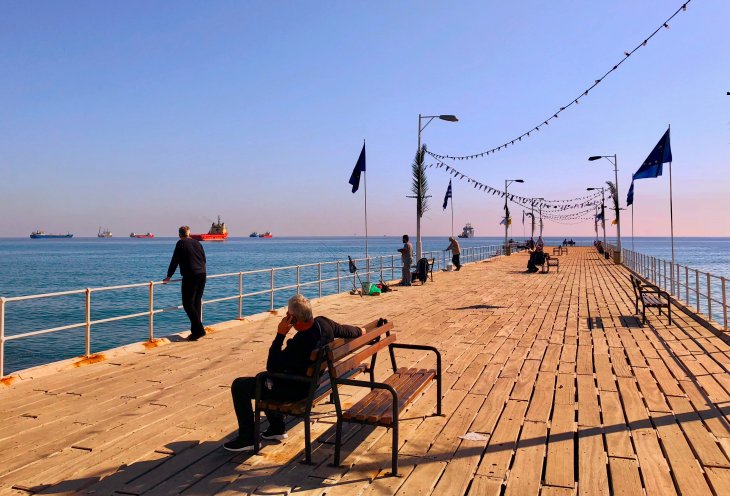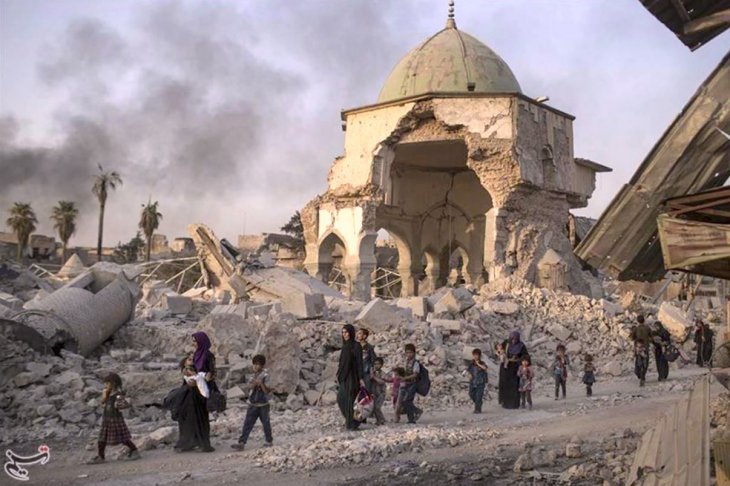A world without the need for critique is unthinkable. And yet, Critical Security Studies (CSS) have learned that critique is a difficult and far from self-evident exercise. The Security Dialogue 50th anniversary issue builds on this legacy and addresses, once again, the specter of critique. It is an attempt to give words to the messy… Read more »
Speed, Event Suppression and the Chronopolitics of Resilience
Terrorist attacks, infectious diseases, financial crises, and floods—what makes contemporary dangers so threatening is their tendency to suddenly materialize, rapidly escalate and quickly spread. So how might we respond to such threats? ”What makes contemporary dangers so threatening is their tendency to suddenly materialize, rapidly escalate and quickly spread.” In my recent article in Security… Read more »
Eastern Mediterranean Hydrocarbons Prospects: In Need of a Pragmatic Geopolitical Assessment
An evaluation of the Eastern Mediterranean hydrocarbons situation requires realism, thinking outside the box, taking nothing for granted, appreciating the sense of urgency and a pragmatic assessment of the international environment.

A warm afternoon at the Limassol Marina, in Cyprus. Photo: Andreas Komodromos
Could There Be War in South Asia?
A sinister mixture of geopolitical changes, nationalist sentiments, and election campaigns now has the potential to generate one of the world’s most dangerous security crises.
On 14 February, a terrorist attack in Pulwama in the Indian state Jammu & Kashmir killed more than 40 Indian Central Reserve Police Force (CRPF) paramilitary troopers. This was the deadliest terror attack witnessed in decades of the insurgency in Kashmir and was carried out by the Pakistani based group Jaish-e-Mohammed (JeM).
A furious India promised revenge, while Pakistan denied involvement. India immediately took steps to isolate its neighbour politically and economically and Indian PM Narendra Modi made clear that there would be a military response. On 26 February, Indian aircraft bombed targets behind the Line of Control (LoC) that separates the two nuclear powers in the disputed region of Kashmir. The two countries disagree about the effects of the airstrikes and the conflict took a new turn when it appeared that Indian Wing Commander Abhinandan Vartaman had been shot down and taken into custody by Pakistan. The pilot was soon returned in what PM Imran Khan called a peace gesture.
What is the larger historical and geopolitical context of this latest flare in the conflict between India and Pakistan?
What is the larger historical and geopolitical context of this latest flare in the conflict between India and Pakistan? South Asia is home to almost two billion people, or a quarter of the world’s population. The region can be analyzed as an international political system that consists of the countries India, Pakistan, Bangladesh, Sri Lanka, Afghanistan, Nepal and Bhutan. In addition, China, Iran, Russia and the United States are involved as third parties to varying degrees. But the international system that comprises South Asia is in a state of change.

Kashmir / Nations Online
This Week in South Sudan – Week 9
Monday 25 February At a meeting in Juba, representatives from the South Sudan Opposition Alliance, the SPLM-IO, and the South Sudan People’s Defence Forces, committed to end violations against children. Wednesday 27 February The People’s Democratic Movement’s leader Hakim Dario said that IGAD should renegotiate the revitalised peace agreement, arguing it should include their demands… Read more »
Is Climate Change Denial the Biggest Problem with Trump’s New Panel?
It’s clear the Trump administration takes a skeptical stance toward human-induced climate change, but the recently proposed climate and security panel might pave the way for having their cake and eating it too.
Dangerous feelings: Checkpoints and the Perception of Hostile Intent
Checkpoints were a surprisingly deadly place for civilians in both Afghanistan and Iraq. While our attention was often drawn to the more spectacular or scandalous acts of violence, the steady accumulation of dead and injured bodies at coalition checkpoints passed by largely unnoticed. At one point, the situation in Iraq was so bad that an… Read more »
A Book that Looks Like an Encyclopedia
Write about a book that has been particularly important for me? A difficult task! In those formative youthful years when one is attempting to shape one’s identity, in the profession as well as in society, many books and articles exert an influence – now in one direction, then in another. I could have mentioned Johan Galtung’s Forsvar uten militærvesen [Defence without armed forces] (1959) which contributed to my conversion to pacifism, as well as to my becoming a peace researcher.
Or Erich Fromm’s The Sane Society (1955), which almost turned me into a Utopian socialist. Or Hannah Arendt’s Eichmann in Jerusalem (1963), which made me aware that atrocities could be committed by bureaucrats.
Or my first sociology textbook, Erik Allardt and Yrjö Littunen’s Sociologi (1962), which used an example from Paul Lazarsfeld to introduce five ‘self-evident truths’ on the first page, only to go on to reveal that all the assertions were empirically incorrect.
Or of course Aschehougs konversasjonsleksikon, the encyclopedia that I grew up with, or the expanded version, Store norske leksikon, that was my children’s childhood companion.
Or I could simply have capitulated and said (which is true) that I am a slow reader and not particularly patient, so that I was influenced significantly more by articles than by books.
 However, I have chosen Human Behavior: An Inventory of Scientific Findings by Bernard Berelson & Gary A Steiner (Harcourt, Brace & World, 1964). This book attempted to summarize everything that – at the time of its writing 50 years ago – was considered reasonably certain knowledge in the field the authors call behavioral science, with a primary focus on psychology and sociology. They catalogue this knowledge in the form of 1,045 findings, grouped into 14 chapters.
However, I have chosen Human Behavior: An Inventory of Scientific Findings by Bernard Berelson & Gary A Steiner (Harcourt, Brace & World, 1964). This book attempted to summarize everything that – at the time of its writing 50 years ago – was considered reasonably certain knowledge in the field the authors call behavioral science, with a primary focus on psychology and sociology. They catalogue this knowledge in the form of 1,045 findings, grouped into 14 chapters.
So, this is not a book for reading from cover to cover, but rather a resource for looking things up and use as an aid within one’s areas of particular interest. Its similarity to a dictionary may help to explain why I fell for it. Another explanation is that my copy of this book was a gift from my mentor, Johan Galtung, when I started working at the Peace Research Institute Oslo (PRIO) as a research assistant in 1964, the same year as Human Behavior was published. At about the same time, Galtung wrote a lyrical review in Dagbladet, where he described the book as an example of ‘a book that concludes one epoch and introduces the next’ (1).
This Week in South Sudan – Week 8
Wednesday 20 February A recent UN report tally alleged perpetrators of sexual violence, killings and torture in South Sudan. The confidential list of suspects includes people from the army, national security, military intelligence, rebel forces and affiliated armed groups. Bel Trew in Independent: “Too Young to Wed: Poverty and Hunger are Driving up Numbers of… Read more »
ISIS Women Hoping to Return Home Are Met with a Cold Shoulder from State Officials
The media has yet again turned its attention toward the women of ISIS.
Currently ISIS only occupies one square kilometre of the so-called caliphate they once had, and as the final battles to regain former ISIS-controlled territory are unfolding, more and more ISIS fighters’ wives or widows have ended up in refugee camps all over Syria and Iraq. These wives and widows no longer have a caliphate to look to and many are reaching out to their home countries for assistance to return home. Many do so with the hope of providing a better life for their children.

Nouri Mosque in Mosul after being retaken from ISIS, Dec 2017. Photo: Antoine Glédel / Tasnim News / CC BY-SA 4.0